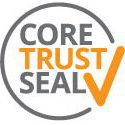- Submit data
- Submission guidelines
- XBT data
XBT data submission
BODC aims to ensure that all data incorporated into our database are adequately documented to allow long term viability and future access. Therefore, key data set information (metadata) are important for each data set we receive.
Information specific to XBT data are described below. Metadata should be supplied in our metadata submission template, however we are able to accept metadata in any format. Please do not be discouraged from sending us data even if some of the information is unavailable. We fully understand that there are many reasons why the standards specified may not be completely achieved.
Instructions for general data submissions and other data types are also available.
Data standard
Where possible, all relevant calibrations should be applied to the data including laboratory and field calibrations. Data should be checked for quality and pre-edited or flagged for erroneous values.
Metadata specific to XBT data
Collection details
- Ship and cruise identifier.
- Project (if applicable).
- XBT station identifier.
- Date/time of the start of each profile.
- Position of each profile and method of position fix (i.e. DGPS, GPS).
- Water column depth. Include method — i.e. sounding and methodology, chart.
- Ancillary meteorological information.
Instrument details
- Instrument description, reference number, manufacturer and model, recording rate — provide a literature reference, web site reference or briefly describe.
Calibration
- Calibration reference temperature and method used to determine calibration.
Data sampling/processing
- Editing and quality control methods.
- Equation used for calculating fall rate.
- Precision of methods (i.e. number of significant figures).
- Quality control report.


